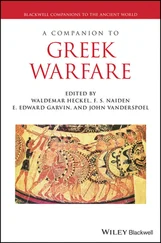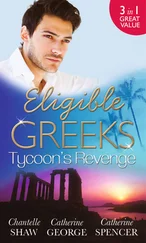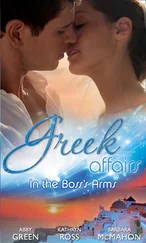The distinction between choral and solo compositions is unquestionably important for the reconstruction of the occasion and the audio-spectacle, but their boundaries were fluid. We know that choral compositions were re-performed solo and that solo compositions re-performed chorally. 22There are also songs that conjure up different performance venues, such as sanctuaries and symposia, which indicate different performance modes. 23Moreover unforeseen circumstances and/or practical considerations might dictate a course of action at variance with the initial intention of a given composition.
Choruses, Chorus Leaders, Chorodidaskaloi, and Poets
Unlike the modern world’s specialization and professionalization, Greek poets composed the words, the melodies, and trained the choruses who were by and large amateurs drawn from the citizen body. Although our evidence is scant, it indicates that poets trained choruses at least in their own cities. We have seen that recent scholarship has entertained the possibility of Sappho as a choral poet. This view, which as we shall see has ancient authority, gains further support from the recently discovered fuller version of the Tithonus poem (fragment 58):
(several words missing) the violet-rich Muses’ fine gifts, children, (several words missing) the clear-voiced song-loving lyre: (several words missing) skin once was soft is withered now, (several words missing) hair has turned white which once was black, my heart has been weighed down, my knees, which once were swift to dance like young fawns, fail me. How often I lament these things. But what can you do? No being that is human can escape old age. For people used to think that Dawn with rosy arms (several words uncertain) Tithonus fine and young to the edges of the earth; yet still grey old age in time did seize him, though he had a deathless wife. 24
The speaker talks to young people about the gifts of the Muses and a song-loving lyre, she complains about the marks old age has left on her complexion, her hair, her mood, and her agility. She can no longer dance like a young fawn, because her knees do not support her. Our speaker is clearly a choreut, in all likelihood female, who experiences problems because she is getting on in years. A number of scholars identify the speaker of this fragment with Sappho herself. 25If the identification is right, our speaker is Sappho in her role of chorodidaskalos , which she is no longer able adequately to fulfill, if we take the statement at face value, because of her old age. 26
I suggest that Philostratus the Elder had this and other poems of Sappho in mind in his description of a painting featuring a choral performance in the precinct of Aphrodite ( Imag . 2. 1, ὑμνήτριαι). For our purposes it makes little difference if Philostratus does not describe an actual painting, but reconstructs a rehearsal of a choral performance on the basis of his own contemporary experience, Sappho’s poetry, and possibly other sources. 27
What Philostratus describes is a performance of young women in a sanctuary of Aphrodite. The chorus leader is skilled, beautiful, and still young, but a wrinkle heralds old age. The statue of Aphrodite is lifelike, too. At this point the speaker apostrophizes his readers, asking if they want to pour a libation of words on the altar, for the altar has already enough frankincense and cinnamon and myrrh, it has a fragrance of Sappho. Once again, the painter is praised for the vividness of the painting which enables the viewers to hear the young choreuts singing. One of them is off-tune. The chorodidaskalos frowns at her, claps her hands, and ably brings her back into tune. A description of the appearance of the young choreuts follows: they are barefoot, they wear close-fitting girdles and colorful garments, their chitons are loose so as to not constrict their movement. They are beautiful. Paris or any other judge would have a hard time to choose the best, because they rival one another in looks and “honeyed voice” (μελίφωνοι). The speaker hastens to add that this is Sappho’s expression. The envisaged hypothetical contest is not based on looks only, but on looks, movement, and voice. The emphasis on the sound is further strengthened by the assertion that Eros is playing along with them and producing harmonious notes by striking his bow. The description of the painting ends with the subject of the song-dance. The eroticized choreuts sing and dance the birth of the goddess of love. The Philostratean ekphrasis goes far beyond a vivid description of a choral performance. It is a successful attempt to reproduce the irresistible visual, aural, and olfactory appeal of choreia , Sappho-style. The Philostratean image of Sappho as a chorodidaskalos gains further support from an epigram in the Palatine Anthology ( 9.189) that depicts the poet as chorus leader (3–4) and to a reference in Aulus Gellius to choruses of boys and girls performing Sappho’s and Anacreon’s poetry. 28
Sappho was not the only poet to express the frustration of the aging chorodidaskalos . Antigonus of Carystus ( Mir . 23 [27] p. 8 Keller) quotes some lines from one of Alcman’s songs and asserts that the aging speaker who complains about his heavy knees that no longer support him is Alcman himself. 29In contrast to Sappho, however, who laments the inevitability of old age, Alcman expresses the wish that he were a bird:
No longer, honey-toned, strong-voiced (or holy-voiced) girls can my limbs carry me. If only, if only I were a cerylus, who flies along with the halcyons over the flower of the wave with resolute heart, strong (or holy) sea-blue bird. 30
How seriously these statements are to be taken is unclear. It is possible that they are hyperbolic, meant to elicit compliments for the fitness of chorodidaskaloi past their prime.
An agonistic epigram usually dated to the Hellenistic period extolls the fitness of Simonides at the age of 80 and turns the image of the aging chorodidaskalos ’ feebleness upside down (XXVIII Page):
Adeimantus was archon in Athens when the Antiochid tribe won the intricately-made tripod; one Aristides, son of Xenophilus, was choregos of the chorus of fifty men who had learned well; and for their training glory (κῦδος) came the way of Simonides, son of Leoprepes, at the age of eighty. (ὀγδωκονταέτει παιδὶ Λεωπρεπέος)
Simonides may have been an exception, of course, but his age was not perceived as a problem by the members of the Antiochid tribe, who trusted him to compose and train a chorus for a dithyrambic contest. 31The epigram offers us a valuable glimpse into choral training privileging the outcome: Simonides’ disciples are said to have learnt well.
In a charming epinician, the Fourteenth Olympian Ode , Pindar lets the male choreuts speak of their training (13–20):
O queen Aglaia, and you Euphrosyne, lover of song-dance, children of the mightiest of the gods, hear me now – and may you, Thalia, lover of song-dance, look with favour upon this lightly stepping revel-group that celebrates kindly fortune. For having practiced (ἐν μελέταις) I have come to sing of Asopichus in Lydian mode, since the land of the Minyae is victorious at Olympia because of you. 32
The honorand Asopichus competed in the category of boys. The choreuts celebrating his victory were probably also boys of his age. They designate themselves as a komos , they draw attention to their light step and to the practice they have done in order to come and celebrate their friend’s Olympic victory. 33This charming song, a cross between a hymn and an epinician, conjures up the ancient sanctuary of the Charites in Orchomenos where the chorus of boys perform in the goddesses’ presence. 34Despite the reference to choral practice, it is worth noting that Pindar chose not to mention a chorodidaskalos in this instance.
Читать дальше












